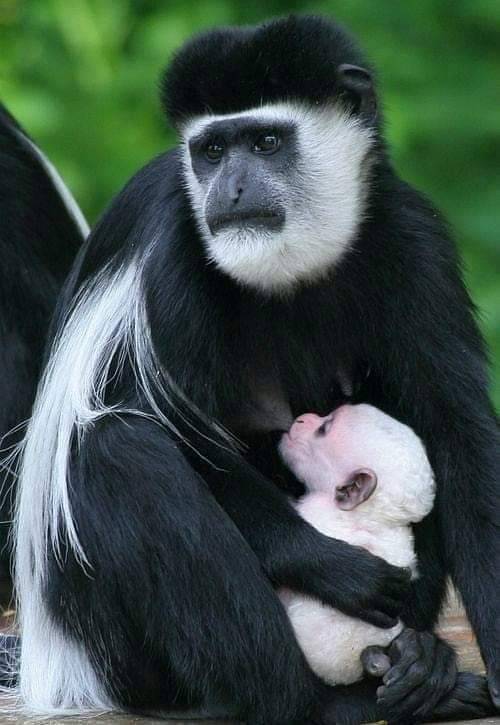#black and white colobus monkeys
Text
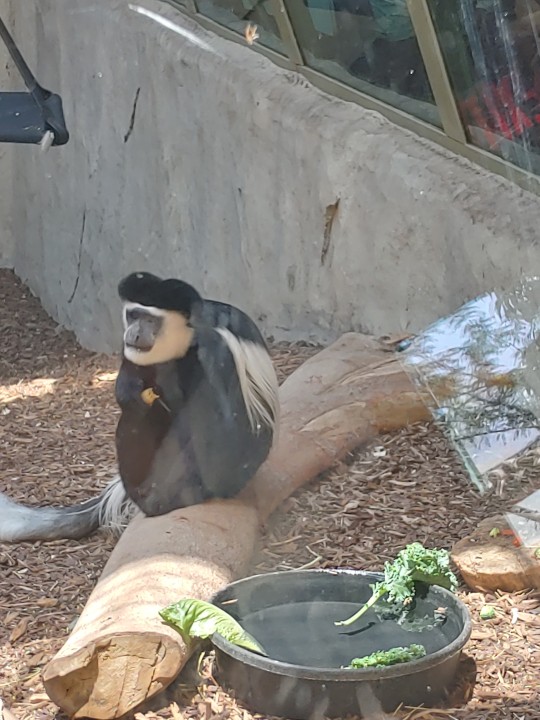
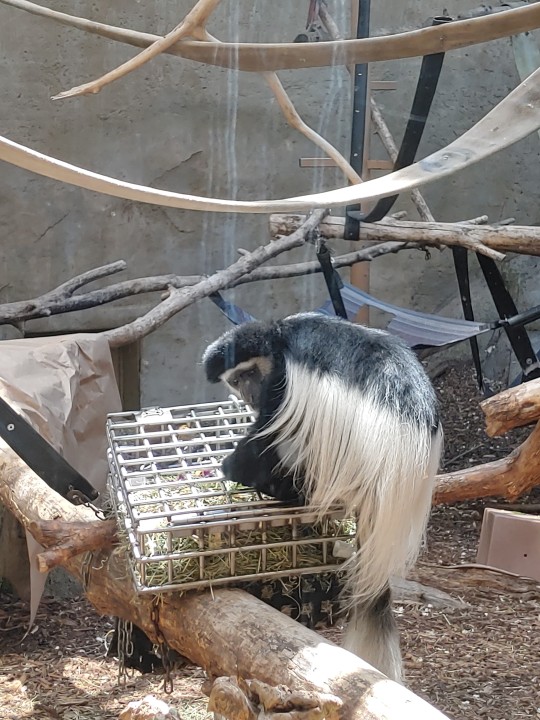
Black and white colobus monkeys at the Calgary Zoo. The group is made up of four individuals, two male and two female.
#black and white colobus monkeys#colobus monkeys#monkeys#primates#calgary zoo#wilder institute#zoo#animals#cute
19 notes
·
View notes
Text

Brehm's Tierleben. Written by Alfred Brehm. Illustration by Wilhelm Kuhnert. 1922 edition.
Internet Archive
219 notes
·
View notes
Text
Why does every picture of a black and white colobus look like they were just told their whole family is dead?
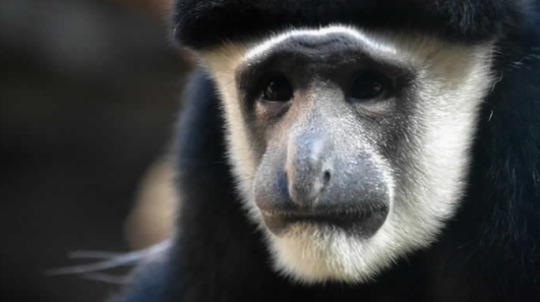
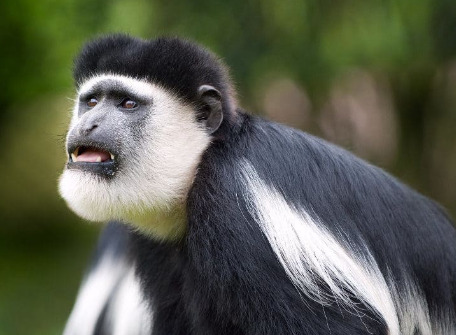
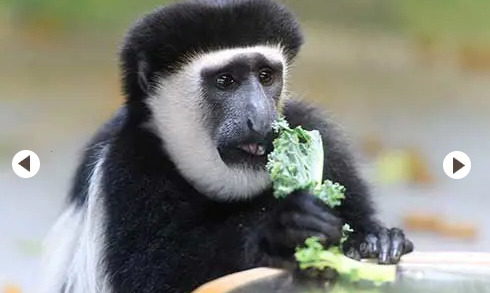
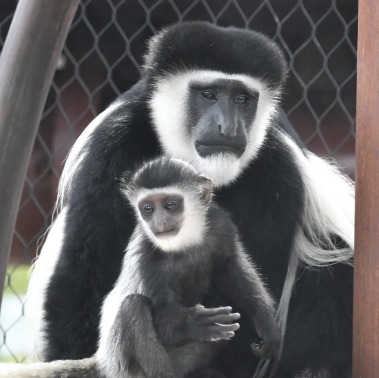
2 notes
·
View notes
Photo







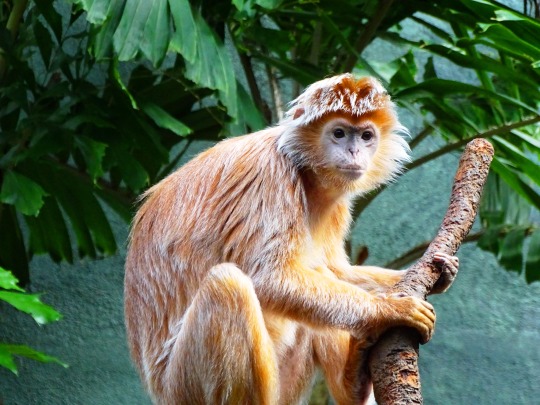


Monkey Day
Spend a day at the zoo with these cheeky creatures, throw a monkey-themed fancy dress party or fundraise to protect these precious primates.
Monkeys are interesting creatures – cute, mischievous, and sometimes downright obnoxious (anyone who disagrees has obviously never had their laundry torn down by a family of primates when it’s hanging to dry). Many species of primates are also endangered, and then there are questions of animal rights and the usage of primates in medical research. That’s why there’s Monkey Day, a day that’s been dedicated to raising awareness about non-human primates.
Learn about Monkey Day
Monkey Day has been created to celebrate monkeys, as well as “all things simian,” which includes lemurs, tarsiers, apes, and other non-human primates. It is a great day when it comes to raising awareness about different types of monkeys and primates around the world, as well as the issues they face and how we can help them.
Environmental activists and animal rights activities are especially vocal and passionate about this date. The same goes for art institutions and visual artists. Supporters and celebrates of this date include the Smithsonian Institution, the Metropolitan Museum of Art, the Louvre Museum, London’s National Portrait Gallery, National Geographic, Greenpeace, and Jane Goodall.
History of Monkey Day
Back in 2000, Casey Sorrow was an art student at Michigan State University, and he ended up writing “Monkey Day” on his friend’s calendar as a prank. But then they actually celebrated the occasion with other art students at MSU, and Sorrow later started collaborating with fellow MSU student on the Fetus-X comic strip, where the holiday was mentioned and popularized. Since then, Monkey Day has been observed internationally as a day to celebrate primates (including monkeys, but also apes, lemurs, and tarsiers).
Sorrow himself still does much to promote the holiday and the cause of primate welfare, and in addition to the Monkey Day website, he also maintains a “Monkeys in the News” blog which discusses primate-related news around the world and comes out with a list of the top ten primate-related news stories from the past year every Monkey Day.
Since Monkey Day was created, it really has gone from strength-to-strength. It is now celebrated in many different corners of the world. This includes Scotland, Turkey, Thailand, Colombia, the United Kingdom, Estonia, Pakistan, India, Germany, and Canada. It has been described by the Washington Post as a day to do the following:
“Learn something about these adorable and highly intelligent primates. Or you could use this day to act like a monkey.”
Monkey Day Timeline
2nd Century AD Claudius Galenus studies monkeys
In the early days of pioneering medicine Galenus (known as Galen) studied monkeys through dissection, noticing their similarities to humans.
1939 Flying monkeys are featured in film Wizard of Oz
In a strange and frightening portion of the plot, monkeys with wings act as minions released by the Wicked Witch of the West to scare off Dorothy and her friends.
1941 Curious George makes debut in books
As monkeys begin appearing in films and books, one of the most endearing monkeys will last in popularity for at least 80 years–Curious George. Although there are only 7 books in the original series by H. A. Ray, the character lives on through an animated television show, videos and even a 2006 feature film.
1959 First monkey in space
A squirrel monkey, Miss Baker, and a rhesus macaque, Able, were the first monkeys who made a successful launch and return to space. They were sent by the United States Air Force on a Jupiter rocket.
2000 Monkey Day begins
As a little joke, Casey Sorrow, a Michigan State University art student, wrote “Monkey Day” on a friend’s calendar just to be silly. Then, in more silliness, they decided to go ahead and celebrate the day with other art students. Later, Casey Sorrow became the co-creator of the weekly Fetus-X comic strip, which was used to promote the day.
How to celebrate Monkey Day
You could simply dress up in a monkey costume and play the part, because there are some people who do just that for Monkey Day and even hold competitions for it. Or you could spend the day at the zoo, because many zoos around the world do hold special celebrations for Monkey Day. Some of these events focus on educational events about monkeys, while others do things like auction off artwork created by chimps and performing intelligence tests on primates.
Even if a local zoo in your area is not hosting an event on this date, we would definitely recommend taking a trip to your nearby zoo and spending some time with the animals. Make sure you do take a look at their calendar beforehand, as zoos all around the world have special activities and talks going on. For example, at Australia’s National Zoo & Aquarium, they hold a number of educational talks and activities that are designed to raise money for endangered species, such as Cotton-top Tamarins in Columbia, as well as increasing awareness.
In Scotland, at the famous Edinburgh Zoo, they raise awareness about the different dangers that primates face by using monkey storytelling. Monkey Day events are also held at The Faruk Yalçın Zoo and Botanical Park in Darıca, Turkey to raise awareness. In India, the Indira Gandhi Zoological Park holds a number of different programs so that children can become educated about issues facing wildlife and so that people are encouraged to adopt monkeys. The list doesn’t end there either. In Pakistan, the Lahore Zoo really goes the extra mile. They hold educational events and art competitions about monkeys, including performances to highlight the threats they face, poetry readings about monkeys, and much more.
Even if you don’t have a monkey at your house, you might consider throwing a monkey day party, inviting all of your friends over (keep in mind that humans are in fact primates too, even without gorilla costumes), and common activities at such celebrations involve films such as King Kong, Planet of the Apes, and Lady Iron Monkey, as well as monkey-themed music (The Monkees, anyone?).
Often, celebrations involve fundraising for primate-related causes and charities, and many organizations around the world dedicated to primates hold Monkey Day events of various sorts. So when Monkey Day comes around, get out there and do it proper, by monkeying around!
Finally, another way that you can celebrate Monkey Day is by watching a film based on this primate! There are so many different types of monkey films. Of course, the Planet of the Apes series of films is the most well-known, but there are many others. Disney’s Monkey Kingdom comes highly recommended. Other famous monkeys on our screens include the Chain-Smoking Capuchin in The Hangover Part II, Clyde in Every Which Way But Loose, Cheeta in Tarzan the Ape Man, George in Curious George, Joe in Mighty Joe Young, and King Louie in The Jungle Book.
Source
#Gelada Baboon#Wolf's mona monkey#2019#Bronx Zoo#New York City#my favorite zoo#indoors#original photography#animal#travel#vacation#tourist attraction#landmark#Mandrillus sphinx#outdoors#ebony lutung#Western lowland gorilla#Black-and-white colobus#Monkey Day#19 December#InternationalMonkeyDay#I really love the first pic
6 notes
·
View notes
Text
Growth of African Tourism as Industry Remains Resilient
The festive season in Africa also marks the highest season in the tourism industry, as demand for getaway destinations in the continent surges. According to a Hospitality Report Africa – 2018/19, IATA’s most popular airline destinations in Africa in terms of traffic are South Africa, Egypt, Morocco, Algeria, Nigeria, Tunisia, Kenya, Ethiopia, Mauritius and Tanzania respectively. These being just…
0 notes
Text
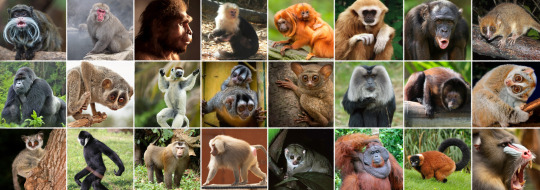
🦍The primate tournament list of candidates has been finalised! Polls will start going up soon!🦧
Thank you to everyone who submitted a species! Here is the full written list:
Basal primates (non-simian primates, including Strepsirrhini and Tarsiiformes)
†Notharctus (Notharctus tenebrosus)
Calabar angwantibo (Arctocebus calabarensis)
West African potto (Perodicticus potto)
Red slender loris (Loris tardigradus)
Bengal slow loris (Nycticebus bengalensis)
Pygmy slow loris (Xanthonycticebus pygmaeus)
Senegal bushbaby (Galago senegalensis)
Brown greater galago (Otolemur crassicaudatus)
Ring-tailed lemur (Lemur catta)
Verreaux’s sifaka (Propithecus verreauxi)
†Archaeoindris (Archaeoindris fontoynontii)
†Megaladapis (Megaladapis madagascariensis)
Madame berthe’s mouse lemur (Microcebus berthae)
Aye-aye (Daubentonia madagascariensis)
Philippine tarsier (Carlito syrichta)
Pygmy tarsier (Tarsius pumilus)
New world monkeys (Platyrrhini)
Wied’s marmoset (Callithrix kuhlii)
Goeldi’s marmoset (Callimico goeldii)
Bearded emperor tamarin (Saguinus imperator subgrisescens)
Golden-headed lion tamarin (Leontopithecus chrysomelas)
Panamanian white-faced capuchin (Cebus imitator)
Central American squirrel monkey (Saimiri oerstedii)
Gray-bellied night monkey (Aotus lemurinus)
Bald uakari (Cacajao calvus)
Madidi titi monkey (Plecturocebus aureipalatii)
Atlantic titi monkey (Callicebus personatus)
Black bearded saki (Chiropotes satanas)
White-faced saki (Pithecia pithecia)
Colombian red howler (Alouatta seniculus)
Brown spider monkey (Ateles hybridus)
Northern muriqui (Brachyteles hypoxanthus)
Yellow-tailed woolly monkey (Lagothrix flavicauda)
Old world monkeys (Cercopithecidae)
Mantled guereza (Colobus guereza)
Zanzibar red colobus (Piliocolobus kirkii)
Nepal gray langur (Semnopithecus schistaceus)
Silvery lutung (Trachypithecus cristatux)
Golden snub-nosed monkey (Rhinopithecus roxellana)
Proboscis monkey (Nasalis larvatus)
Red-shanked douc (Pygathrix nemaeus)
Collared mangabey (Cercocebus torquatus)
Japanese macaque (Macaca fuscata)
Rhesus macaque (Macaca mulatta)
Hamadryas baboon (Papio hamadryas)
Mandrill (Mandrillus sphinx)
Gelada (Theropithecus gelada)
Common patas monkey (Erythrocebus patas)
Bale mountains vervet (Chlorocebus djamdjamensis)
De brazza’s monkey (Cercopithecus neglectus)
Apes (Hominoidea)
Lar gibbon (Hylobates lar)
Pileated gibbon (Hylobates pileatus)
Kloss’s gibbon (Hylobates klossii)
Northern white-cheeked gibbon (Nomascus leucogenys)
Siamang (symphalangus syndactylus)
†Junzi (Junzi imperialis)
Bornean orangutan (Pongo pygmaeus)
†Gigantopithecus (Gigantopithecus blacki)
†Dryopithecus (Dryopithecus fontani)
Western lowland gorilla (Gorilla gorilla gorilla)
Chimpanzee (Pan troglodytes)
Bonobo (Pan paniscus)
†Australopithecus (Australopithecus afarensis)
†Panranthropus (Panranthropus boisei)
†Flores hobbit (Homo floresiensis)
†Neanderthal (Homo neanderthalensis)

The first set of polls will go up as soon as I have finished writing the descriptions! In the meantime, I would appreciate if you could share this tournament around- it won’t be much of a tournament if there aren’t that many people voting! In going down the research rabbit hole I’ve found so many interesting species and stories, and I promise learning about them here will be worth your time!
#primate bracket#tournament#tumblr tournament#poll#polls#primate#primates#extinct primates#biology#animals#zoology#please let me know if I made a mistake anywhere!
99 notes
·
View notes
Note
What do you think Netflix LEM looks like? If you can, could you draw the design?
I can't draw for shizz, but i can give some details and my fave designs by others! My fave Netflix!LEM designs are by @alicedusstuff here, and by @skollsfate/Neph on twitter!
I love the idea of Netflix's Lui're Mihou/Six Eared Macaque (or "Olive" as I have nicknamed them) having dark fur with a grey/white gradient, and ashen grey skin. Almost like a Colobus Monkey or a White-Handed Gibbon. Still very much a macaque like what the Monkey King resembles, which is what causes confusion.
Netflix!LEM: *saves someone on accident*
Villager: "Are you the Monkey King?"
Netflix!LEM, not even paying attention: "Yeah sure, whatever."
*later*
Netflix!LEM: *sees his face on a wanted poster calling for the recapture of The Monkey King* "Crap."
*A few years later with the pilgrims*
Netflix!SWK, holding a different wanted poster: "Who's this handsome jerk going around saying he's me?!"
While Netflix!SWK and LEM share a similar body plan, their fur and details are all different. LEM has a more angular face, messier fur, rounded lower body, and their hair "fans out" almost like the six lotus-petal-shaped ears they hide within. Its like the differences between Sonic and Shadow the Hedgehogs. Same species, humans just bad at differenting animals.
Extra body deets;
Eyes are a red/purple colour. Unfortunately reminds people of Monkey's red laser eyes (more identity confusion).
White-ish gray face markings kinda like a skull. Very cool.
Has a heart-shaped white marking on their chest. Very few know about it.
Is like a few inches taller than his SWK. Monkey loves and hates it.
Has a beauty mark/mole on their upper lip that stays no matter their transformation.
Colour scheme is grey, black, olive green, with the tiniest splash of blood red.
#liu er mihou#six eared macaque#the monkey king netflix#the monkey king 2023#jttw inspo character ideas#sun wukong
20 notes
·
View notes
Text

Black -and-white Colobus Monkey by PhreezeFrame
4 notes
·
View notes
Text
Rwanda Gorilla Safari: A Superb Opportunity To View The Mountain Gorillas
Little and compact, Rwanda is overflowing with untamed wildlife, amazing national parks, and superb scenes. The gorilla-chimpanzee trekking in Rwanda gives you an extraordinary chance to explore the national treasure. How to catch a glimpse of the typical safari creatures? Embarking on a Rwanda gorilla safari tour is imperative
Trekking to see chimpanzees and gorillas is without a doubt a feature of the Rwanda gorilla safari tour. It ensures a close encounter with the primates present in the various national parks and jungles. It is an immersive experience.
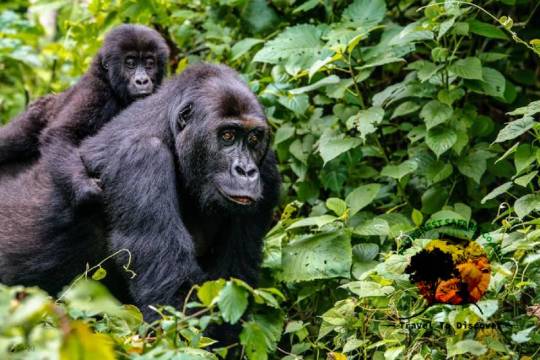
This remarkable journey will transport you to the picturesque savannah reserve in Rwanda. It is where you will encounter a diverse array of wildlife, including leopards, elephants, buffalos, zebras, lions, black and white rhinoceroses, panthers, giraffes, and an abundance of antelope species such as topi, impala, and defassa waterbuck.
Rwanda boasts three primary wildlife destinations: Volcanoes National Park, Nyungwe Forest National Park, and Akagera National Park. All of them are home to a wide range of fauna. Among these, Rwanda stands as one of the three countries where endangered mountain gorillas can be found. Observing these magnificent creatures in their native environment is an incomparable wildlife encounter. Additionally, visitors have the opportunity to track habituated chimpanzees and golden monkeys, similar to the thrilling gorilla trek. Rwanda's diverse habitats provide a sanctuary for numerous species, including mountain gorillas, chimpanzees, golden monkeys, hippos, giraffes, zebras, leopards, crocodiles, and over 600 bird species.
Volcanoes National Park is renowned for its diverse population of mountain gorillas, with several hundred individuals residing there. The park offers the opportunity to observe a dozen habituated gorilla groups, and a total of 96 tracking permits are issued daily for this purpose. In addition to gorillas, the park is home to various other wildlife species such as the golden monkey, elephant, buffalo, giant forest hog, bushpig, bushbuck, and black-fronted duiker. Bird enthusiasts will find around 200 bird species, including 16 Albertine Rift Endemics, although birdwatching logistics can be challenging in this area.
Nyungwe Forest National Park, on the other hand, boasts the highest level of biodiversity in Rwanda. It safeguards over 1,050 plant species and supports a rich array of wildlife, including 85 mammal species, 310 bird species, 32 amphibian species, and 38 reptile species. Among the park's highlights are its thirteen primate species, such as chimpanzees, Ruwenzori colobus monkeys, L'Hoest's monkeys, and various other monkey species. Nyungwe is also renowned as a premier destination for forest bird watching in Africa, attracting dedicated birdwatchers from around the world.
Akagera National Park is a traditional African savannah reserve where visitors have the opportunity to spot the Big Five. While buffaloes and elephants are commonly sighted, leopards are frequently observed during night drives. The presence of lions and black rhinos is also steadily increasing. In addition to these magnificent creatures, the park is home to a diverse range of wildlife including Maasai giraffes, Burchell's zebras, warthogs, olive baboons, vervet monkeys, hippos, impalas, Defassa waterbuck, bushbucks, common duikers, elands, topis, Bohor reedbuck, oribis, roan antelopes, klipspringers, and the elusive semi-aquatic sitatungas. Night drives often offer sightings of spotted hyenas, genets, civets, white-tailed mongooses, bushbabies, elephant shrews, as well as various species of owls and nightjars.
Combine game viewing in the National Park with its varied wildlife & gorilla trekking in Rwanda could make your journey exciting. It could be a superb opportunity to view the mountain gorillas and experience Africa’s largest protected wetland. To get the best of Rwanda gorilla safari tour including bird watching, local community tour, forest walk & experiencing the wilderness contact Nature Nest safaris at +256 777131912 or visit https://www.naturenestsafaris.com/ today!
3 notes
·
View notes
Text

Thumbelina the colobus monkey enjoying her hammock
#monkey haven#monkeys#colobus monkeys#black and white colobus monkeys#cute#animals#cute animals#sanctuary#monkey sanctuary
12 notes
·
View notes
Text
youtube
Monkeying Around - Gorilla Ajabu and Colobus Chase by SloggerVlogger
As Ajabu will have to wait a little longer to play with the new baby girl in the troop, he makes do with chasing the black and white colobus monkey around that share the habitat with the troop. I believe it's wonderful natural enrichment.
Ajabu is lying on the rope. The colobus monkey sits just behind him, watching. They both simultaneous jump, swing off the rope.
In the next clip, down the bottom, Ajabu moves past Kamba, the oldest member in the troop and chases after the monkey. Both the species seem to enjoy teasing each other. Ajabu sits on the log, first beating his chest at the monkey then hitting the log. He wants to be chased. The colobus monkeys gang up and jump at Ajabu. He moves back but then swings his arm and moves towards the monkey again. Ajabu gives it a good try, but they are just too agile for him to catch them.
My favourite bit is where Ajabu got a branch with some leaves and teases the monkey with it, as they watch him eat.
Even his mum Shinda climbs after the monkeys, doing a splits on the robes, before deciding it's no good and climbs back down again. Ajabu has one more jump at the colobus.
#SloggerVlogger #PragueGorillas #gorillatagfun
Don't miss a thing—hit Subscribe and Turn on all Notifications to be part of our Great Ape escapades every week.
🛍️Gear up with exclusive merch from our worldwide delivery shop:
🦍Check out rawshutterbug Redbubble for a variety of T-shirts, stickers, apparel, homeware, and much more: 🛍️
https://rb-ambassador.pxf.io/Gorillas
#AD #redbubbleambassador
🦍Express yourself with customizable T-shirts, stickers, apparel, homeware, and more from rawshutterbug Zazzle: https://www.zazzle.com/collections/gorilla_gallery-119832843969795462?rf=238978496872225031
🦍Amazon USA 🇺🇲 Store: https://www.amazon.com/shop/sloggervlogger #Ad #AmazonAssociate
🦍 Amazon UK 🇬🇧 Store:
https://amzn.to/47mDmbA
📷Join the adventure on my travel channel, exploring zoo hyperlapses, walkthroughs, and animal habitats and more. https://youtube.com/@MSVRVisualTravel?sub_confirmation=1
🌐My website: https://msvrvisual.weebly.com/sloggervlogger.html
And guess what? Some of the links above and in the video are affiliate links! When you make a purchase, I earn a commission without any extra cost to you. Your support means the world to me – thanks for dropping by and watching and commenting.
via YouTube https://youtu.be/5ddRm2-peDs
3 notes
·
View notes
Text
Exploring the Best of Uganda's National Parks on Safari
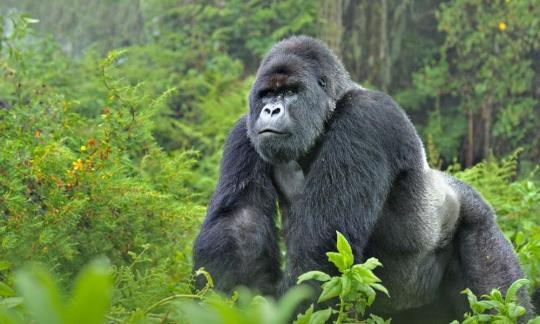
Uganda is home to some of the most diverse and spectacular national parks in Africa, each with its unique blend of flora and fauna. A safari trip to Uganda's national parks offers visitors an opportunity to see a wide range of wildlife, including primates, elephants, big cats, and various bird species.
In this blog post, we will explore some of the best national parks to visit on a safari in Uganda and what makes them unique.
Bwindi Impenetrable National Park: This park is home to more than half of the world's remaining mountain gorillas. A trek through the dense jungle to encounter these magnificent primates is an unforgettable experience. Besides gorillas, Bwindi is also home to several other primate species, such as chimpanzees and colobus monkeys.
Murchison Falls National Park: This park is situated in the northern part of Uganda and is famous for its roaring waterfalls. A boat ride along the Nile River offers visitors an opportunity to view wildlife, such as hippos, crocodiles, and various bird species. The park is also home to big cats like lions and leopards, as well as elephants, giraffes, and antelopes.
Queen Elizabeth National Park: This park is located in the western part of Uganda and is one of the most popular safari destinations in the country. Visitors can enjoy game drives to see elephants, buffaloes, and lions, as well as boat rides on the Kazinga Channel, which is famous for its abundant birdlife. Queen Elizabeth National Park is also home to chimpanzees and the rare tree-climbing lions.
Kibale National Park: This park is known for its diverse primate population, including chimpanzees, red colobus monkeys, and black-and-white colobus monkeys. Visitors can go on guided primate tracking walks, which offer an opportunity to observe these animals in their natural habitat.
Mgahinga Gorilla National Park: This park is located in the southwestern part of Uganda and is home to the endangered mountain gorillas. Visitors can go on gorilla tracking walks to see these magnificent primates up close. The park is also home to several other primate species and offers visitors an opportunity to hike up the nearby dormant volcano, Mount Gahinga.
In conclusion, African Rock Safaris offer a unique blend of wildlife, culture, and stunning scenery, making them an ideal destination for safari enthusiasts. Whether you're interested in gorilla trekking, primate tracking, or game drives, Uganda's national parks have something to offer everyone.
5 notes
·
View notes
Text
6 days Sharing Safaris to Arusha, Lake Manyara, Tarangire Serengeti National Park , Ngorongoro crater with affordable price
6 days Sharing Safaris to Arusha, Lake Manyara, Tarangire Serengeti National Park , Ngorongoro crater with affordable price
Overview of tour packages itinerary as follow
Explore 6 days Sharing Safaris to Arusha, Lake Manyara, Tarangire Serengeti National Park , Ngorongoro crater with affordable price, this tour Starting with Arusha National Park the home to notably different coloured lakes named Momella and the 3km wide Ngurdoto Crater you will proceed to Manyara National Park where you will witness the tree-climbing lionsan, an astonishing variety of birds, and wallowing hippos you will proceed to Tarangire which is known for it's Savannah plains, the immense herds of elephants amounting to 300 and migratory wildebeest, zebra, buffalo, impala, gazelle, habeatest and eland crowd the shrinking lagoons of river Tarangire marks the start of your four days safari expeditiThereafterfter you will proceed to Serengeti then Ngorongoro Crater allowing you to see the diverse topography and wildlife that East Africa offersmakingg your way from the rim of the crater to Serengeti through the adventurous roads of the hollowed-out Ngorongoro while seeing animals, birds, and reptiles along the way. You will come close to the Maasai culture as you will pass by one of their bomas have time to see the huts try their garments and experience the culture. 6 days Arusha
So what is in store for our guests? The concept of 'safari' summons ideas of exploration, vast plains of the savannah, and wild animals. The Complete Northern Circuit Safari captures the magic of Africa by combining brilliant landscapes with spectacular and attractive wildlife. Giant is the word that best represents the Tarangire National Park from the numerous herds of African elephants to the colossal termite mounds and the ancient baobab trees. The Lake Manyara National Park has been blessed with phenomenal biodiversity of habitat and wildlife and Arusha National Park is home to the infamous Mount Meru. We have two of Africa's Seven Natural Wonders at the lush caldera that contains the spectacular Ngorongoro Crater and the top pick ultimate safari destination, the Serengeti National Park. The national parks and conservation areas of the Northern Circuit Safari will surpass every expectation that you have set for this trip. 6 days Arusha
Day One (1): Arusha to Arusha National Park
Tourist(s) will commence the Northern Circuit Safari by traveling to Arusha National Park. The game drive will travel along the shores of Lake Momella and through the bronzed bush where the Ngurduto Crater Buffaloes, waterbucks, giraffes, warthogs, zebras, and Gazelle reside throughout the year. The elusive leopards and elephants tend to be shy at Arusha but there is a chance of spotting them. Renowned for flawless memories, the Northern Circuit Safari offers more than the most exquisite game drives. Education and exploration are on the agenda, we will set out on foot. The stroll is a chance to feel the sensation of Africa’s vibrant pulse through the soles of your feet and experience the bush at its core. You will be accompanied by an armed ranger for the walk. He will guide you through the luscious forest up to the crystal waterfall and lead you to the area for viewing the black and white colobus monkeys. After late afternoon proceed back to Arusha
Accommodation
Clients selection Public campsite/ Tinted campsite/ Lodges
Meals: Water is included in all meals (Other drinks is not included)
Day Two (2): Arusha National Park to Tarangire National Park to Mto wa Mbu
soon after breakfast, you will continue to the beautifully parked scenic haven that contains a high diversity of bird species. The African elephant is the largest mammal on land and the herds in the park are a remarkable sight. Tarangire's wildlife includes elephants, lions, giraffes, warthogs, ostriches, impalas, cheetah, mongoose, buffaloes, and baboons. We will drive to Mto wa Mbu and reach in the late afternoon. The Northern Circuit safari surely is a memorable one!! Main Accommodation
Accommodations: Clients selection Public campsite/ Tinted campsite/ Lodges
Meals: Water is included in all meals (Other drinks is not included)
Day Three (3): Mto wa Mbu to Serengeti National Park
You will continue your journey to Serengeti National Park. It contains the world's largest concentration of wildlife including zebra, gazelles, lions, wildebeest, elephants, and giraffes. The seasonal migration of the masses of wildebeest is a magnificent sight. Serengeti means 'The Land that Moves on Forever' and the splendid plains of savannah validate this. We will stop for lunch on a kopje (rock outcropping) and then the game drive will journey further into the park. Once the game drive is over we will proceed to the Serengeti where an appetizing dinner and overnight will be provided.
Full Accommodations: Clients selection Public campsite/ Tinted campsite/ Lodges Meals: Water is included in all meals (Other drinks is not included)
Day Four (4): Serengeti National Park to Ngorongoro Crater
On this day, our early morning game drive is exhilarating. The calls of the animals are clear and scents of crisp air linger. Tracks left by predators on the prowl are untouched and could lead us to their den. The splendid rays of orange, pink, and purple start to emerge on the horizon as the birdsmelo dies begin to harmonize. The park is home to leopards, cheetahs, buffaloes, elands, wild dogs, crocodiles, monkeys, baboons, hippos, rhinos, and various antelope. A delicious lunch will be served at the park. In the afternoon, we will drive you to the Ngorongoro Crater rim.
Accommodation
Accommodations: Clients selection Public campsite/ Tinted campsite/ Lodges
Meals: Water is included in all meals (Other drinks is not included)
Day Five (5): Ngorongoro Crater to Lake Manyara National Park
On this fifth day, we will drive to the Ngorongoro Crater early in the morning. We will have a scrumptious picnic lunch and go on a game drive. A large amount of wildlife, as well as the fauna and flora, are traits that attribute to the title of ‘Africa Garden of Eden. Due to the lofty structure, few animals migrate in and out of the crater, so there is a big chance of seeing every member of The Big 5 in one day. You could also encounter vultures, zebra, hippo, wildebeest, and hyenas. The alkaline lake attracts flamingos, geese, and storks. Our dedicated, skilled, and experienced guides will ensure that you discover all the glorious wonders of nature in your tour. Explore Ngorongoro. We will drive to Lake Manyara and you will enjoy dinner and overnight.
Our Accommodation
Accommodations: Clients selection Public campsite/ Tinted campsite/ Lodges
Meals: Water is included in all meals (Other drinks is not included)
Day Six (6): Lake Manyara National Park to Arusha
On this day tour, more attractive treats are in store for you! Extending for miles along the emerald base of the gold-flecked Rift Valley escarpment, Lake Manyara National Park can only be described as an array of vistas. Giraffes that are so dark in coloration, appear to be black from a distance and the tree-climbing lions roam the savannah plains. Monkeys cling to the canopies of the forest whilst the hippos disguise themselves in the waters of the soda lake. With over four hundred species, Lake Manyara is a birdwatcher delight and attraction. Discover some of the wildlife including buffalo, zebras, wildebeest, mongoose, klipspringer, and bushbuck. A lovely picnic lunch will be served in the park and after the game drive. We will drive back to Arusha. This Northern Circuit safari will surely make your plan for a future repeat trip.
Package includes
General
Transport (4x4 Land Cruiser) with open roof
Park Fees
Professional English speaking safari guide & chef
Campsites / Lodge
Food
Breakfasts
Lunches
Dinners
1.5L bottle of drinking water per day
Not-Includes
Flights (International & Domestics)
Travel insurance & Medical insurance
Visas
Personal items
Tips for safari guide & chef
Soda and Alcoholic beverages
Extra activities
4 notes
·
View notes
Text

The Mantled guereza (Colobus guereza) is a black-and-white colobus, a type of Old World monkey, native to west central and east Africa. Long white fringes of hair, known as a mantle, run along each side of its black trunk - a particular appearance which is being referred to in its common name. Its face is framed with white hair and it has a long tail which is longer than the head and body combined. The tail ends in a large white tuft, which varies in how much it covers the tail. Being social primates, Mantled guerezas form units of 8 - 15 individuals, including a dominant male, 3 - 4 breeding females along with their offsprings. Sometimes, several other males may temporarily join the group.
📷 MonAmi Photography
48 notes
·
View notes
Text
Round 2, match 9: black-and-white monkeys
Mantled guereza (Colobus guereza)

These stunning monkeys live in the forests of central Africa. They are well adapted for eating leaves, but will also eat fruit, wood, insects, and soil. Like howler monkeys of South America, guerezas will create a roaring dawn chorus that can be heard from a surprisingly long way away.
Nepal gray langur (Semnopithecus schistaceus)

One of a few primate species to live outside the tropics, the Nepal gray langur lives in the high-altitude forests of the Himalayas. They are semi-arboreal, and relatively adaptable in terms of habitat. They eat mostly leaves and fruits, but have also been reported licking stones, eating soil, and even eating charred bones, all to obtain important dietary minerals. They’re also one of many non-human species documented to engage in homosexual sex!
10 notes
·
View notes
